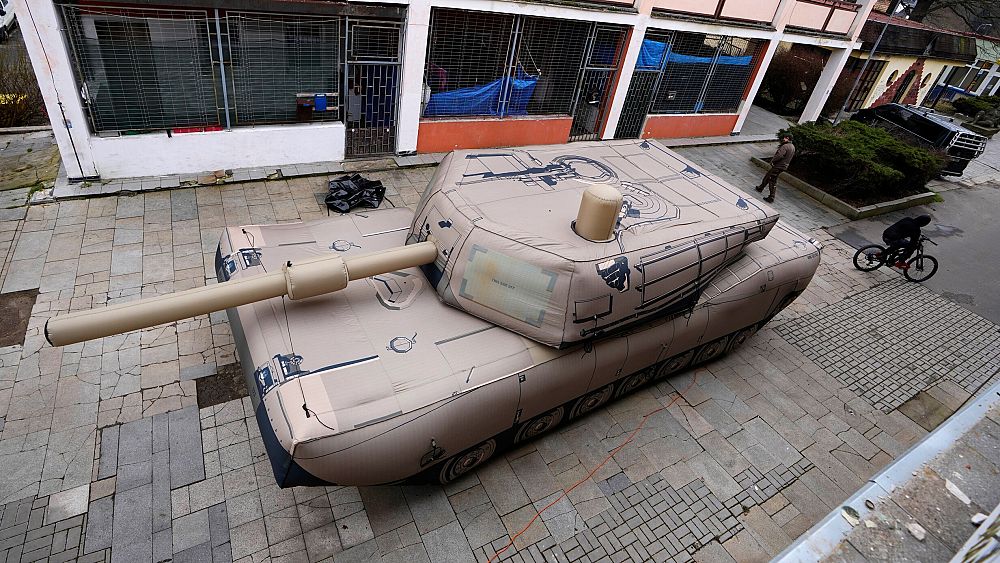
Russia’s war in Ukraine has sparked a surge in demand for weapons and vehicles, with many allies sending supplies to Ukraine to help the country defend itself.
But the war has also seen a surge in demand for inflatable decoy vehicles and weapons – with one company’s business up 30 per cent last year.
Czech tech company Inflatech makes more than 30 different inflatable military decoys, ranging from tanks and armoured vehicles, to aircraft and large weapons.
They even produce decoy versions of the US-made HIMARS rocket system, which have been sent to Ukraine amid billions of dollars worth of Western military aid.
Inflatech CEO Vojtech Fresser won’t say if his decoys are used by Ukrainian forces battling Russian invaders, but he said on Monday that his business was up by more than 30 per cent last year.
He expects growth to keep rising in double figures for at least another three to five years.
While he won’t directly comment on support for Ukraine, he said: “I can imagine that if we want to support a partner country which is in trouble, we would send them inflatable decoys. Or it already has them, and if not, it will have them, for sure”.

Inflatech, based in the northern town of Decin, currently produces up to 50 decoys a month.
They are sold to a number of unspecified NATO member countries, and all such exports have to be approved by their governments.
The company uses light materials, such as artificial silk, so the total weight of a fake tank is up to 100 kg. It takes four soldiers to operate a decoy, with 10 minutes being enough to unwrap and inflate a fake piece of military hardware.
The decoys can contribute to the war effort by fooling enemy forces. The trick is to deceive cameras, thermo-cameras and radars to make them believe they have pinpointed a valuable target and use expensive missiles to destroy it.
“If I force the enemy to destroy a thing of mine by using something which is four times, but in reality it could be 20 times more expensive, then I’m the winner economically,” Fresser said.
The decoys that originally were developed for training purposes can cost up to $100,000 (€93,795) each.
Fresser said he would prefer to make toys for kids. “But first, we have to secure a safe world for them. Then, we’ll hopefully return to civilian projects,” he said.

